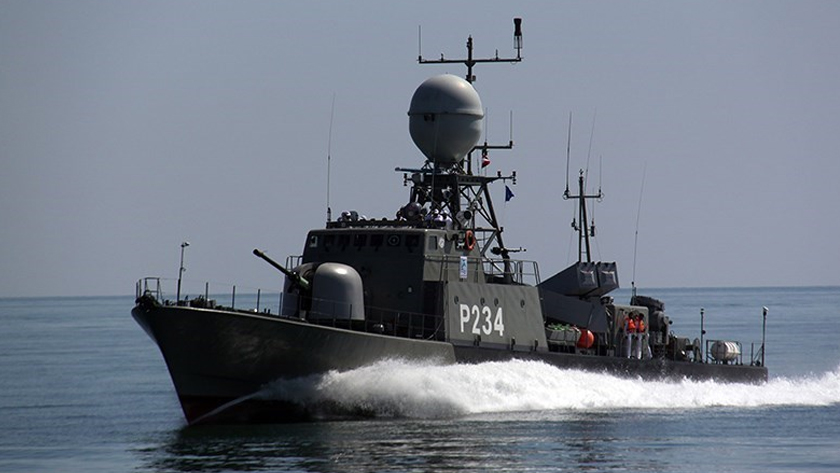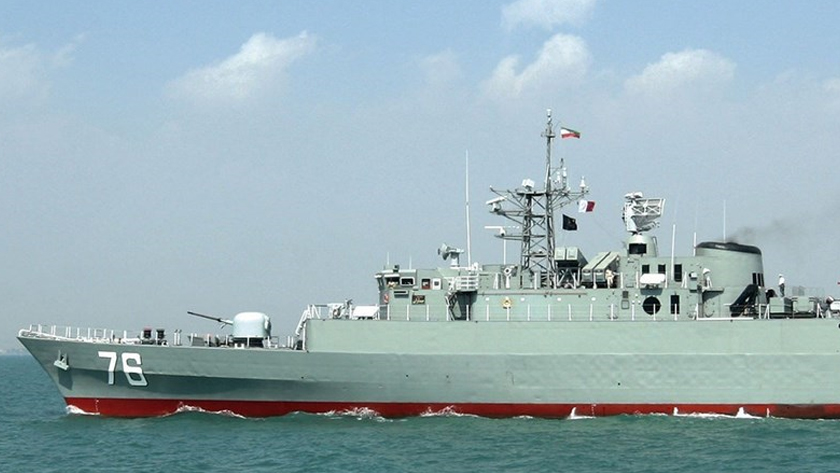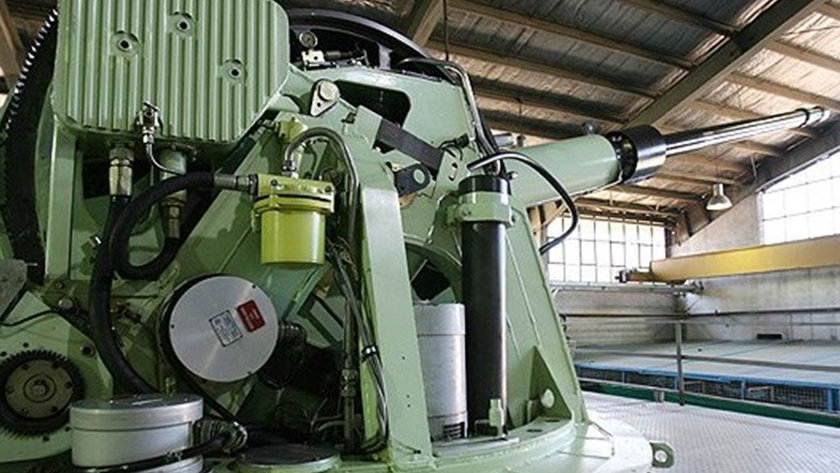Iran Press/Iran news: The system was publicly unveiled for the first time in September 2006. Fajr 27 naval cannon is a modern defensive weapon capable of destroying surface and air targets. The specialists of Hadid Industrial Group, affiliated with the defense industry, succeeded in building it after a 6-year effort.
This cannon is a fully automatic weapon that is electro-hydraulically driven.
The Fajr 27 cannon can collide with a variety of surface vessels and can also be used against air targets.
The Fajr 27 naval artillery system is installed and used today as the primary weapon of most heavy and semi-heavy vessels of the Navy of the Islamic Republic Army.
The Fajr 27 naval cannon uses 76 mm caliber bullets with 120 rounds per minute.

This powerful weapon is a dual-purpose cannon. In addition to targeting ships, submarines, speedboats, and surface-to-surface missiles, it also destroys helicopters and anti-ship missiles and air targets up to 23,000 feet, equivalent to about 7,000 meters.
This weapon can react quickly and repel any surface and air attack with its highly advanced technology.
Extremely high firing rate, fully automatic control and the ability to install on towed systems are other advantages of this cannon.
The maximum range of 17 km, 12 km against surface targets, and 7 km against air targets are among the capabilities of Fajr 27.
Fajr 27, with advanced technologies, has 30 mechanical sets and 22,000 pieces, and preparation time of 4 seconds, and the ability to operate in all weather conditions with automatic guidance by the radar system.

An optical targeting system has also been observed for this cannon in Shahid Naghdi ship, which is very useful in the case of electronic warfare. The speed and action of the artillery are very suitable with their caliber and provide a reasonable defense for ranges under 10 km.
So far, the main bullets used for the Fajr 27 cannon are of the Contact fuse type. Shots with fuse contact are based on direct impact and must be fired at the target after being targeted optically or radar and exploded after being hit directly.
In a naval conflict scenario, the cannon can be used when two vessels collide or when a low-flying target, such as a helicopter, is in the area of operation. But when there are threats such as cruise missiles or supersonic fighters, this cannon will not work with this type of ammunition.

To address this shortcoming, proximity fuze for 76 mm cannons was unveiled during a recent exhibition of military achievements. These fuses are tiny sensors mounted on the target bullets and start working after firing. The transmission radius for these sensors is 4 meters, and it operates in the "VHF" band.
If a fuse is used, it is unnecessary to hit a target directly, such as an airplane or a cruise missile, and getting close to it is sufficient. Upon reaching the desired distance, the explosion command is issued, and with the explosion of the cannonball, the blast wave and its fragments are released towards the target.
Proximity fuses significantly increase the chances of a successful collision with targets such as cruise missiles and high-speed fighters.
Due to the advantages of the proximity fuse in defense and offensive, these fuses can play an essential role in improving the combat capability of artillery units and various cannons, especially the Fajr 27 naval cannon.

Features of Fajr 27 cannon:
Minimum range against naval targets: 12,000 meters
Maximum range: 17,000 meters
Maximum range against air targets: 7,000 meters
Number of parts: 22,000
Number of mechanical sets: 30 sets
Firepower: 120 rounds per minute
Preparation time for firing: 4 seconds
Objectives: surface, aerial
Caliber: 76 mm (average)
203
Read More:
Iranian Army Naval Capability Exhibition held
Ali Akbar khandan

